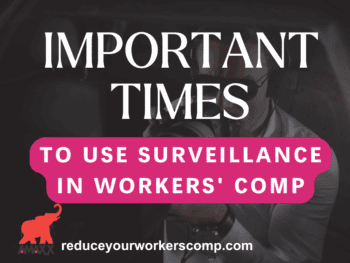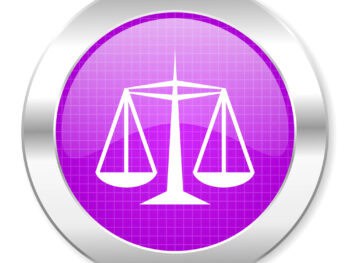1. Introduction
This is an outline of measures that can be taken by employers to reduce NY comp expenses. The measures outlined have been undertaken by employers in the past with success. The measures do not come at the expense of workers and worthy claims; they limit delay and arrive at correct payments without enlargement due to inefficiency and insufficient information.
2. The NY workers compensation system since 1947
The present compensation system was largely created by the 1947 changes, the most significant of which was enlarging the number of lump-sum settlements. Although only 1% of all claims resulted in a lump sum, these claims carrier 60% of all attorney fees awarded. (WCxKit)
The second significant change occurred in the 1960s when the Board declared that its medical guidelines were obsolete but failed to adopt new guidelines until the 1990s. In the intervening period, this led to decades of litigation with a “blank yardstick” resulting in the majority of settlements clustering at 50% disability on PPD claims.
3. Recent attempts at reform
In 1984, a compensation commission report called for creation of objective medical guidelines to limit the growing number of trials, appeals and prolonged adjudications of claims which resulted in frustration of workers and dubious accuracy in results. The then proposed changes threatened to radically alter the practice of comp law for both claimant and defense lawyers and were resisted, as have recent changes.
Currently, extensive guidelines have been enacted for medical treatment and evaluation of permanent disability, but there are still no published methods for measuring post-injury loss of wage earning capacity a claimant has returned to work or has received a valid offer of work within residual capacities. Such offers will be one of the methods for cost reduction described in this outline.
4. Reasons for prolonged litigation in New York
New York has had an anomalous workers compensation system for decades. The reasons have to do with the politics of the 1940s which, after a generation, were forgotten, but the residua have remained.
The system became marked by an elevated number of hearings, trials and appeals. Law, regulations and court decisions were seldom cited and the proceedings were seemingly governed by informal customs rather than law and fact.
That is currently changing, with restrictions on litigating issues without cause or preparation, but the generally casual atmosphere has remained. However, parties making efforts to diligently investigate all facts and research law to prepare claims – especially prior to the first hearing – will realize advantages and results.
5. Opportunities for employers
There are a number of critical points in a New York claim where an employer’s efforts can achieve unexpected results. The results can take many forms reaching a correct resolution months or years sooner, limiting unnecessary testimony, reducing adjournments to obtain material that should have been available at the first hearing and reducing unwarranted awards.
The Principal Employer Initiatives
- Use of OSHA for investigation of problematic claims. (29 CFR 1904.5 can be used to obtain HIPAA releases and schedule an early IME exam.)
- Enhanced preparation of the first report (C-2) with location and attachment of supporting documents for defense.
- On PPD claims,
- a search for prior medical conditions to be conducted 6-9 months after date of injury,
- an ADA conference with worker, with spouse present,
- offers of modified or full RTW prior to Sect 32 settlement discussions,
- for certain acute conditions, employer assistance and support for SSDB
- claims although no comp claims have been contemplated.
Initiative A (OSHA)
permits HIPAA releases and an IME exam, by the employer,
permits HIPAA releases and an IME exam, by the employer,
Far faster than is possible under the NY WCL by a carrier or TPA. The OSHA records remain separate and are not automatically released to the comp file
but, with proper efforts, can be used in in the compensation claim. The HIPAA releases produce information that is a highly effective method for keeping unrelated conditions from becoming merged into the comp claim.
The active role by an employer in the beginning of a claim is, in fact, appreciated by most employees.
Initiative B (enhanced C-2)
is designed to utilize the employer’s superior background knowledge and access to relevant documents. These assets are not developed simply by completion of a C-2. Often, a claim will come to a successful conclusion at the first hearing solely because a fact is identified, explored and developed before hearings start.
is designed to utilize the employer’s superior background knowledge and access to relevant documents. These assets are not developed simply by completion of a C-2. Often, a claim will come to a successful conclusion at the first hearing solely because a fact is identified, explored and developed before hearings start.
Initiative C
contains three separate parts for limiting PPD claims.
contains three separate parts for limiting PPD claims.
- A. The location of prior medical records which can support a reduction, or halting, of future wage loss payments, per the April, 2011 “Poli” decision.
- B. An ADA conference, so that the claimant, and spouse, may hear of RTW possibilities prior to any Sect 32 settlement offers. (Spouses are usually supportive of RTW rather than settlement and should be present at the conference.)
- C. An offer of limited or modified work which, if refused, can be construed as a voluntary withdrawal from labor. The offer also acts as an objective measure of wage earning capacity and can supplant Board guidelines for medical evaluation of PPD final rates. (WCxKit)
Initiative D
employer SSDB assistance for certain medical conditions such as heart attacks, can reduce comp claims filed later. Many workers comp heart attack claims are not filed until after a worker has consulted an SSDB attorney, most of who are also comp attorneys, and the time to file a compensation claim has not yet expired. Workers frequently resist filing claims against employers who have been supportive.
employer SSDB assistance for certain medical conditions such as heart attacks, can reduce comp claims filed later. Many workers comp heart attack claims are not filed until after a worker has consulted an SSDB attorney, most of who are also comp attorneys, and the time to file a compensation claim has not yet expired. Workers frequently resist filing claims against employers who have been supportive.
Author: Attorney Theodore Ronca is a practicing lawyer from Aquebogue, NY. He is a frequent writer and speaker, and has represented employers in the areas of workers’ compensation, Social Security disability, employee disability plans and subrogation for over 30 years. Attorney Ronca can be reached at 631-722-2100. medsearch7@optonline.net
MODIFIED DUTY CALCULATOR: www.LowerWC.com/transitional-duty-cost-calculator.php
SUBSCRIBE: Workers Comp Resource Center Newsletter
Do not use this information without independent verification. All state laws vary. You should consult with your insurance broker or agent about workers comp issues.
©2011 Amaxx Risk Solutions, Inc. All rights reserved under International Copyright Law. If you would like permission to reprint this material, contact Info@ReduceYourWorkersComp.com

















